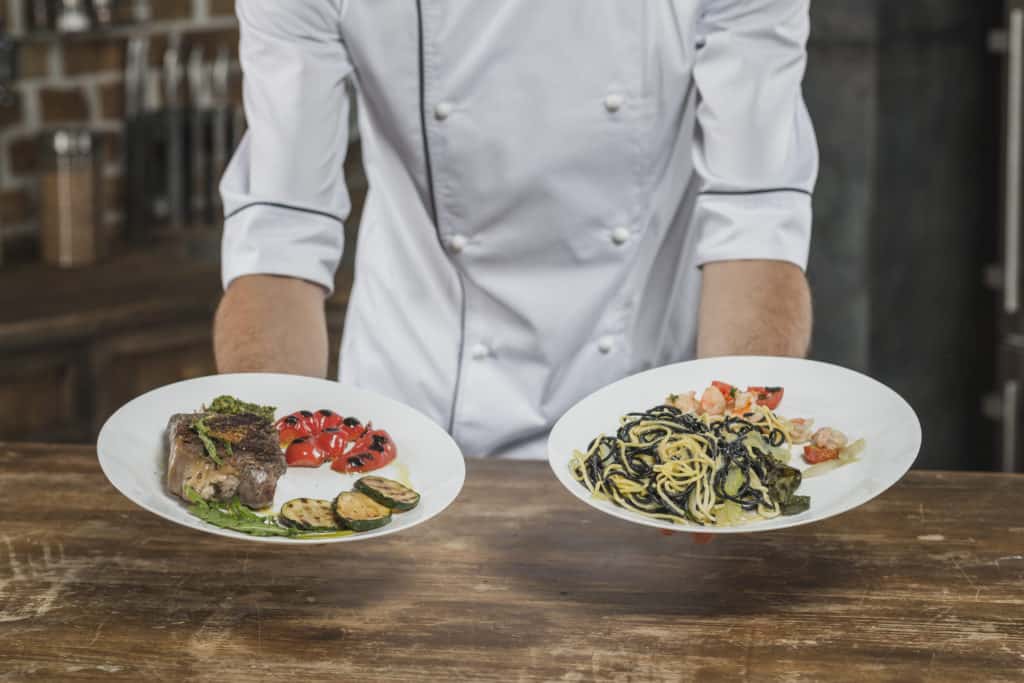
Since 1973, March has been designated as National Nutrition Month®. Sponsored annually by the Academy of Nutrition and Dietetics, this year’s theme is “Personalize Your Plate.” I LOVE this theme because it speaks to the fact that we are all unique beings and our physical needs and food preferences do vary. But what does “Personalize Your Plate” really mean, and how exactly does one achieve a personalized plate?
Your plate needn’t be perfect to be healthy
Perfect eating isn’t the goal (and is impossible to achieve anyhow). Whew! So now that that pressure is off, if you’re looking for some general direction on how to put together a healthy meal, you can get balanced and actionable advice at the updated USDA website for consumers called MyPlate. (I like the quizzes they have on the site).
It’s also important to realize that there is no one-size-fits-all eating plan. Diet books and programs that promise to make it “easy” are usually promoting one basic, prescriptive plan. And honestly, those kinds of plans don’t work long-term. Why? Because in real life, a single approach can never work as well as one that is tailored just for you. In fact, no reputable nutrition expert will ever recommend one “best diet.” What’s best for you is likely not the same as what’s best for your neighbor. And even if your diet is packed with healthy foods, if you won’t (or can’t) follow it, it’s not going to help you.
Make nutritious choices you can live with
Finding healthy foods you enjoy, have access to and can afford—and making those foods staples of a healthy and balanced eating plan is the way to make a personalized plate that works. Your preferences, nutrition needs, health issues and your dietary goals are central to how you plan your diet. Forcing yourself to purchase or try products that don’t suit you isn’t necessary (and is usually a waste of money).
When you’re in the aisles trying to decide between different foods, try using Guiding Stars. Compare the star ratings of similar items that “check all your boxes” (appropriate for your health needs, fits your budget and is acceptable to you taste-wise) and then select the item that earns the most stars—that is the way to make Guiding Stars work for you. If their star ratings are the same, their nutritional quality is comparable, so give one brand a try and next time try a different brand to see which you like best.
Keep cultural foods on your plate (or in your bowl)
A personalized plate reflects who you are culturally, too. Healthy foods are found everywhere, so there are healthy menu options in every culture. There’s no need to forgo culturally important foods or traditional favorites (even if they may not be the most healthy choices). There is room on every plate or bowl for foods with historical, cultural or regional significance. These dishes and recipes are part of what makes you, you!
Celebrating and passing down these food traditions is one of the most beautiful things about cooking. If your favorite cultural food doesn’t fit easily into your eating style because you follow a specific type of diet for health reasons (such as diabetes or heart disease), seek out ways you can still enjoy it on occasion. A couple of ways you can do this is to tweak the recipe to be more healthful, eat smaller portions or don’t have that dish as often.
You can also check out The Academy of Nutrition and Dietetics’ tip sheets about cooking cultural foods healthfully. They are available in several languages and for a variety of cuisines including Asian Indian, Filipino, Latin American and more. (Scroll down on this page see the tip sheets.) Check out recipes online for variations that might suit your needs better.
The Guiding Stars website has many star-earning recipes inspired by foods from around the world. You can check them out by searching the Recipes section. You could also consult with a Registered Dietitian about how to work your favorite cultural foods into your diet in a way that best supports your health.